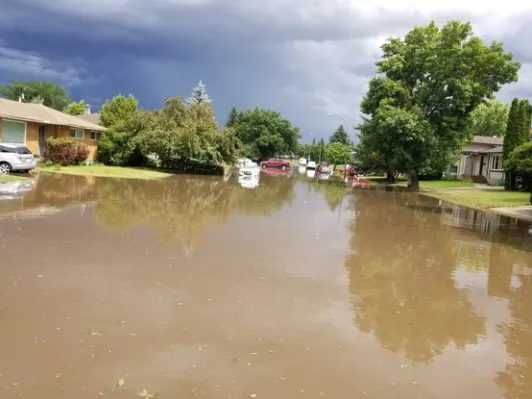
Can our infrastructure withstand increasingly severe weather events?
Destructive storms are becoming the new norm and many are concerned that our buildings, roads, and homes will struggle with the increasingly harsh conditions.
The monstrous blizzard that struck Newfoundland in January was one of the most recent severe weather events that captured international attention. The city of St. John’s plunged into a state of emergency for eight days due record-breaking snowfall that towered over one metre in some areas and wind that gusted over 150 km/h. Calculating the cost of the damage will take months, but many officials are predicting it will be in the millions of dollars due to the damage sustained by buildings, homes, roads and beaches.
Canada’s Changing Climate Report outlines the impact that climate change is having on extreme weather events and says that they will become more severe and frequent in the future as we continue to release greenhouse gases into the atmosphere. In addition to the storms that will bring more snow and rain, coastlines are slowly being submerged by rising sea levels, which could climb by more than 90 cm by 2100. Since record-breaking weather is now the norm, what does this mean for our infrastructure that is highly sensitive to changes in weather, such as roads, homes, and bridges?
MAKING CHANGES TO INFRASTRUCTURE
Ted Kesik, Professor of Building Science at the University of Toronto, says that there are two main infrastructure issues that we need to address in light of the changing climate -- the existing infrastructure needs to be reinforced and modified and a movement away from centralized infrastructure is needed so resources can be better distributed.
Kesik says that most of our vital infrastructures, such as electricity and water, are centralized. The risk is with centralized infrastructure is that the majority of services, like electricity, are produced from one site, which means that millions of people could lose essential services if that site is impacted by extreme weather. Kesik suggests that a distributed network of energy and water production would improve a community’s ability to withstand extreme weather.
“Where possible, combined heat and power plants (co-generation) should be installed in facilities such as hospitals and seniors housing so that both electricity and heat are generated to keep the facilities operational,” Kesik explains.
First responders and emergency services rely on roads for travel and extreme weather often prevents wheeled vehicles from accessing people that are ill or in need of rescuing. Kesik says that municipalities need to invest in vehicles that can travel over deep snow and plans for strategic snow removal of vital routes to hospitals, fire and police stations.
BRACING FOR EXTREME WEATHER AT HOME
Staying up to date with the latest forecast ensures that you are aware of the impacts that could come with a storm, whether it is heavy rain with a chance of flooding or significant snowfall that could make travel impossible. It is best to purchase items that could be needed in an emergency before the storm arrives and Kesik recommends having enough dried or canned foods and drinking water for at least one week. Matches, candles, batteries, flashlights and first aid kits are also supplies that are useful if people are unable to leave their homes or are experiencing a power outage.
“One way to make our homes more resilient is to imagine that we go back in time more than a hundred years and are living in the woods in isolation. Back then, people would have had everything they needed to make it through the winter, and perhaps for places like Newfoundland, returning to their roots, even in big cities and towns, is a prudent adaptation strategy,” says Kesik.
Homeowners are increasingly faced with costly damages after storms and the Insurance Bureau of Canada found that severe weather caused $1.3 billion in insured damage in 2019. While extreme weather naturally occurs without the influence of climate change, the rising cost of storms is becoming a new normal.
It is simply not an option to just pick up a house and move it away from the coastline. Rising sea levels and increasingly powerful storm surges are eating away at coastlines and protective measures, such as installing levees and seawalls, will be needed to keep communities safe. These mitigation measures will significantly reduce the impacts of severe weather, but adaptation strategies will be essential in the coming decades.
“We are likely past the tipping point for climate change and should focus our resources on adaptation strategies,” Kesik says, adding that “there is no 100 per cent guaranteed solution, but I would say that it is all about adaptation since Canadians alone cannot address climate mitigation.”







